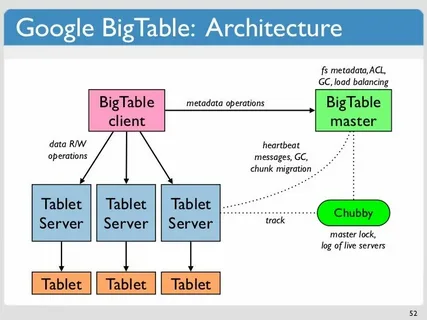What is gcloud list bigtable?

Introduction to gcloud list bigtable
If you’re working with Google Cloud or managing large datasets, you’re probably familiar with gcloud list bigtable—a highly scalable NoSQL database designed for large applications. On the other hand, Gcloud is the command-line interface (CLI) that lets you interact with your Google Cloud resources in a more flexible and efficient way.
So, what happens when you need to view a list of your Bigtable instances? That’s where the gcloud list bigtable command comes into play. In this article, we’ll break down how to use it, why it’s helpful, and some of the best practices around it.
What Does ‘gcloud list bigtable’ Mean?
In simple terms, the gcloud list bigtable command allows you to list all your Bigtable instances within your Google Cloud environment. This command can be especially useful when managing multiple instances across different projects or needing quick access to instance details.
- What it Does: It queries your Google Cloud project to display information about your Bigtable instances.
- Why Use It: When managing large-scale datasets, having a comprehensive list of your instances helps with monitoring, managing, and optimizing your resources.
Why Use Google Bigtable?
Google Bigtable stands out among NoSQL databases due to its impressive features. Designed for high throughput and low-latency operations, it’s particularly useful for applications that require fast access to massive amounts of data.
- Scalability: Bigtable can scale horizontally, handling petabytes of data with ease.
- Performance: Bigtable’s design allows for fast read and write speeds, making it ideal for real-time analytics, machine learning, and IoT data.
Key Features of Google Bigtable
Understanding the key features of Bigtable helps clarify why you might want to use the gcloud list bigtable command to keep track of instances:
- Scalability and Performance: You can scale your Bigtable clusters without downtime, making it an excellent choice for projects that expect rapid growth.
- Low-Latency Reads and Writes: If you’re handling large datasets and need real-time access, Bigtable offers extremely low-latency operations, ensuring fast performance.
Understanding the Gcloud CLI
The Gcloud Command-Line Interface (CLI) is a powerful tool that allows you to interact with Google Cloud’s services using terminal commands. With Gcloud, you can manage resources like Bigtable instances, virtual machines, and more, all without the need to log into the Google Cloud Console.
- Efficiency: Gcloud CLI provides a quicker, more flexible way to interact with your resources compared to the web-based console.
- Automation: You can easily script and automate tasks, such as managing Bigtable instances, using Gcloud.
Setting Up Gcloud to List Bigtable Instances
Before you can list your Bigtable instances, you’ll need to set up the Gcloud SDK. Here’s a brief guide on how to get started:
- Install Gcloud SDK: Download and install the Gcloud SDK from Google’s official website.
- Authenticate: Use the command gcloud auth login to authenticate your account.
- Set Your Project: Run gcloud config set project [PROJECT_ID] to specify the project you’re working on.
Once set up, you’ll be ready to start managing your Bigtable instances.
How to List Bigtable Instances with Gcloud
To list all the Bigtable instances in your project, use the following command:
bash
Copy code
gcloud bigtable instances list
This command will output a list of all your instances, including information like instance ID, cluster information, and zone location.
- Filter and Flags: You can use additional flags such as –filter and –format to customize your results, such as filtering by zone or status.
Working with Bigtable Instances
After running the command, you can take further actions based on the results. For example, you can:
- View Instance Details: Get more detailed information about each instance, including cluster settings and storage configurations.
- Manage Instances: Use Gcloud commands to modify or update your instances as needed.
Common Use Cases for ‘gcloud list bigtable’
- Monitoring: Quickly check the status of your Bigtable instances to ensure they’re running optimally.
- Troubleshooting: If an instance is down or experiencing issues, listing the instances can help identify and isolate the problem.
Optimizing Bigtable Performance
When managing large datasets with Bigtable, it’s crucial to ensure that your instances are optimized for performance. You can use gcloud list bigtable to keep an eye on your instances and make any necessary adjustments.
- Cluster Management: Adjust the number of nodes in your Bigtable clusters based on your performance needs.
- Data Splitting: Use Bigtable’s automatic data splitting features to balance your data across different nodes efficiently.
Security Considerations for Bigtable
Google Bigtable is built with security in mind, but as with any cloud service, it’s essential to ensure your data is protected. When listing instances, always ensure that the correct permissions are in place.
- IAM Roles: Ensure that only authorized users have access to manage or view Bigtable instances.
- Encryption: Bigtable uses encryption by default, but it’s good practice to review your encryption settings regularly.
Pricing Considerations with Bigtable
Google Bigtable’s pricing is based on the number of nodes in your cluster and the amount of data stored. Running the gcloud list bigtable command helps keep track of how many instances you have running and their configurations, so you can optimize costs.
- Usage Monitoring: Ensure you’re not running unnecessary instances that could drive up costs.
- Cost Optimization: Resize or delete instances that are no longer needed to save on expenses.
Gcloud CLI vs. Bigtable Console
While the Gcloud CLI is fast and efficient, the Bigtable Console offers a more visual approach. Depending on your needs, you might prefer one over the other.
- CLI Benefits: Faster, more efficient for those comfortable with command-line tools.
- Console Benefits: Easier for beginners and offers a more user-friendly experience.
Automating Bigtable Operations with Gcloud
For those managing multiple Bigtable instances, automating tasks can save significant time. You can create scripts to list and manage instances automatically, making it easier to monitor and maintain performance.
- Integration: Gcloud can be integrated with other Google Cloud services, allowing for seamless workflows across your cloud environment.
Conclusion
The gcloud list bigtable command is a must-have tool for anyone managing Google Bigtable instances. Whether you’re troubleshooting, monitoring, or optimizing your resources, this command offers quick access to essential information about your Bigtable setup. With the flexibility of the Gcloud CLI, managing your instances has never been easier.





